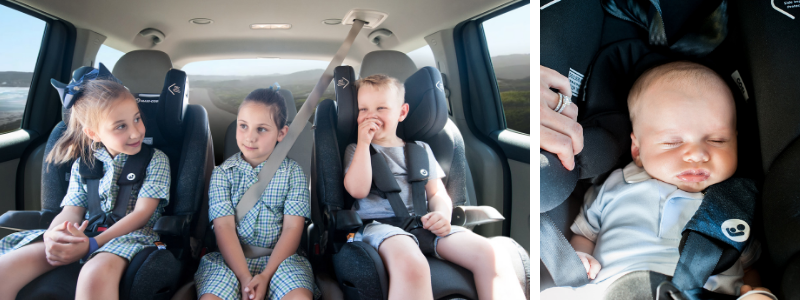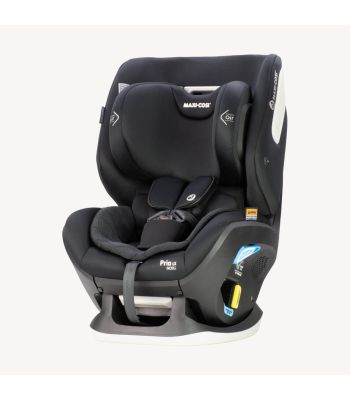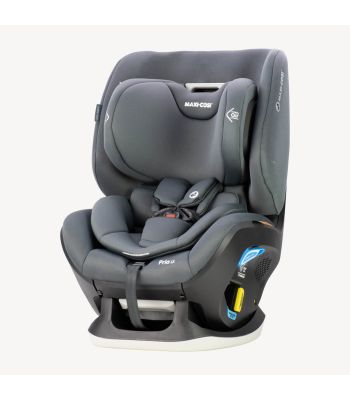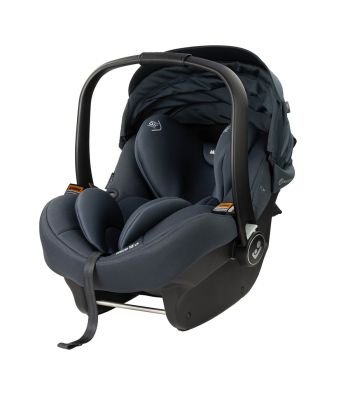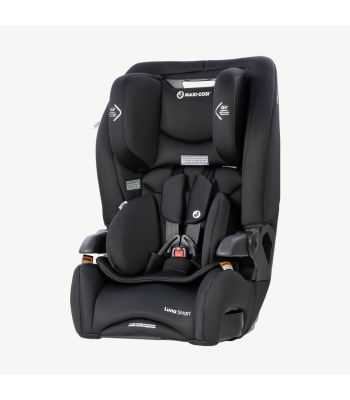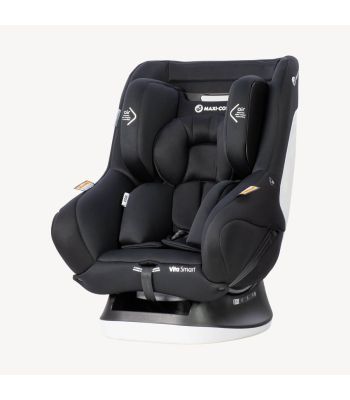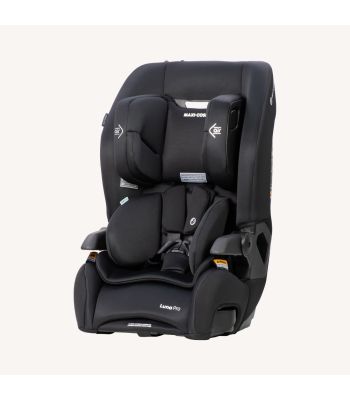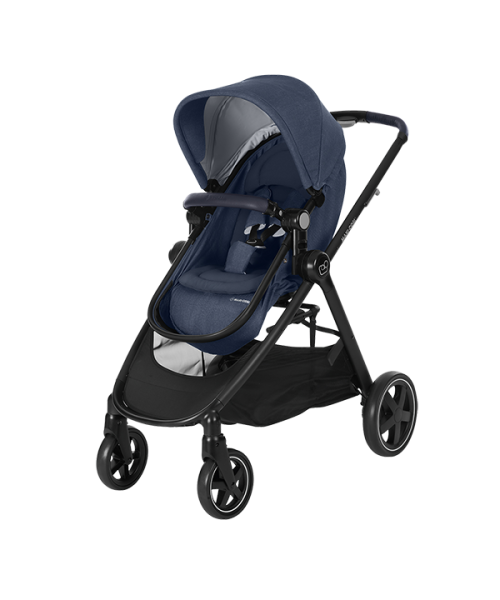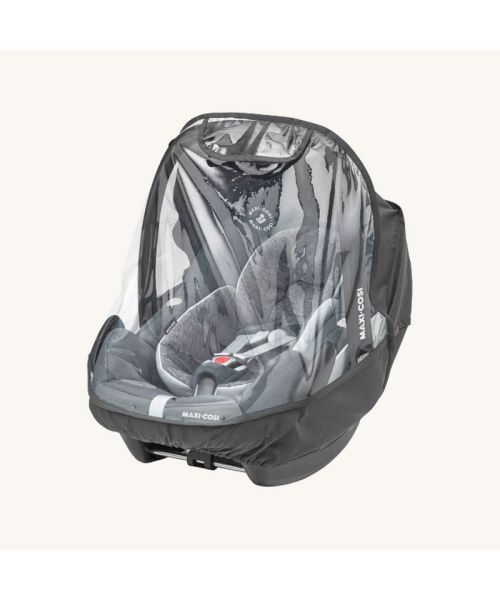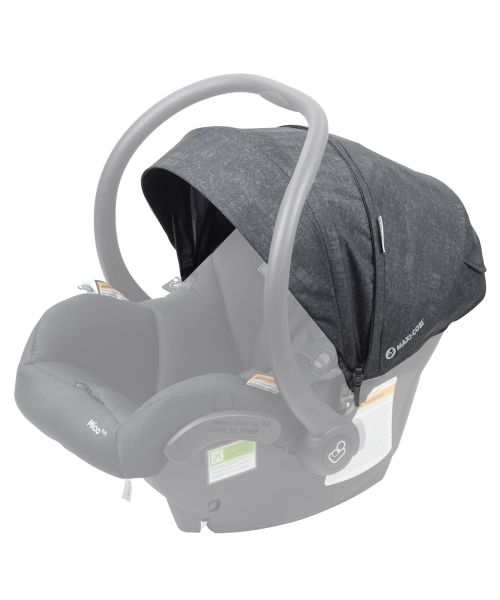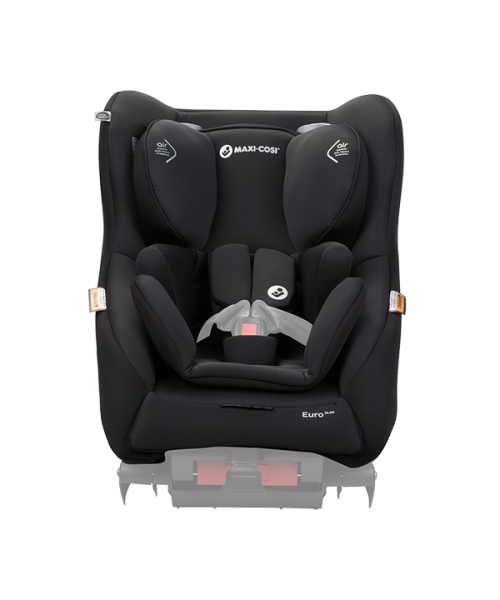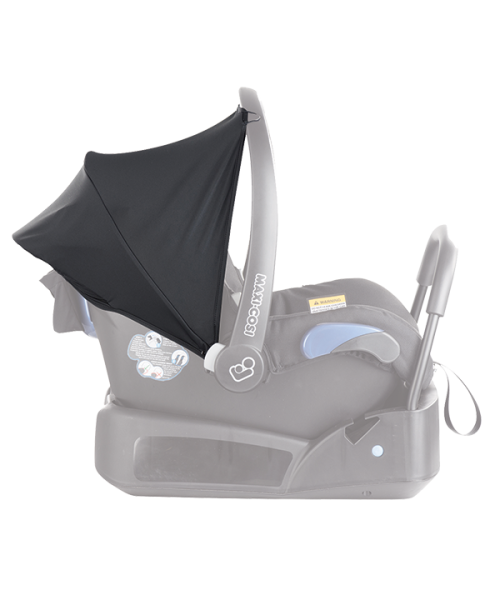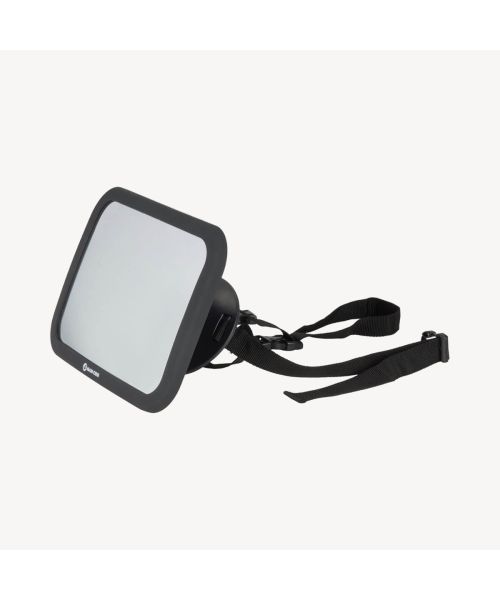In Australia, by law, all children up to the age of seven years should be seated in a suitable baby or child car seat when travelling in a car. But, child safety is more than just following the law – there are many factors to consider when deciding what baby car seat to buy for your child, and when to move them up to the next level of restraint.
The most important thing is that your child is in the car restraint appropriate for their size and they should remain in it for as long as they fit – even if they are older than what the law states. You should also take great care to ensure the seat is installed correctly and the child is properly secured. The child restraint laws were introduced in all Australian states and territories to reduce the number of children being prematurely moved to the next level of child restraint (or to no child restraint at all) and to reduce the effects of serious injury or death in an accident. Here is our ultimate guide to baby and child car restraints to help you make sure your child is as safe as possible while travelling in a car.
Four important things all parents MUST know about child and baby car seats
- All children must be, by law, in a child restraint until the age of seven.
- The seat must be the appropriate seat for the child’s size and age.
- The seat must be installed correctly. A poorly installed seat can be very dangerous.
- The child must be properly fastened and the harness properly adjusted.
How do I know which car restraint is the right one for my child?
The law specifies which type of car seat your child should be in. BUT, it is important to remember that child restraint laws are based on the child’s age to make them easy to follow and enforce. Your child’s seated height should also be considered when buying a car seat (or converting to the next type) to ensure they are in the right seat and are therefore as safe as possible. If you have a tall child you should ask for advice on which brands of child seat are best for taller children.
The law specifies that:
- Babies aged up to six months – a rear-facing carseat or baby capsule
- Children aged six months to four years – a rear-facing or forward-facing car seat with in-built harness.
- Children four to seven years – Car seat with in-built harness or booster seat used with properly fastened and adjusted adult seatbelt.
Why do children under the age of 7 need to be in a car seat?
There are a number of reasons that children under seven should be in a car seat:
- Children in adult seatbelts are 3.5 times more likely to be significantly injured in a crash compared with children in a child restraint.
- Seatbelts are designed for adults and do not offer enough protection for children. They can actually be harmful in the event of a crash and if used incorrectly or prematurely can increase the risk of injury or death.
- Children are not big enough to be appropriately restrained by a seat belt alone. Their legs are not long enough to bend at the seat edge and so children slump, pushing the lap part of the belt up into the abdomen area instead of across the thighs. Also the sash part of the belt across the neck can result in serious injury in a crash.
- Child restraints have inbuilt safety features to protect a child’s head and lower body, such as the wings on each side of the seat. Children in adult seat belts miss out on this customised safety that is designed specifically for their size and weight.
When can children sit in the front seat of a car?
The law is quite specific about when children can sit in the front seat of a car;
- If a car has two or more rows of seats, then children under 4 years must not travel in the front seat.
- If a car has two or more rows of seats, then children aged between 4 years and under 7 years must not travel in the front seat UNLESS all other seats are being used by children under 7 years. In this situation, a child may travel in the front seat using an approved booster seat with a properly fastened and adjusted seatbelt.
- If a car only has one row of seats (eg. a utility or van) then a child can be seated in the passenger seat as long as they are in an appropriate child restraint. A child restraint anchorage point must be available to secure a child car seat for a child under 4 years and and a rear-facing seat should never be installed if there’s an airbag in that position.
How do I ensure my child is as safe as possible while travelling in a car?
It is important to remember that we use car seats to keep children safe – not just to follow the law. There are many safety recommendations regarding child car seat safety that go beyond the law with the aim of keeping children as safe as possible. Here are a few ways you can ensure your child is as safe as possible:
How do I know my child car restraint is properly installed?
A child car seat isn’t an easy thing to install correctly – especially if you’ve never done it before or if you are sleep-deprived! Here are some tips on making sure your child car seat is installed properly.
- Have your child car seat professionally installed. It is best to have your restraint professionally installed and have the installer talk you through the important steps. Most nursery stores will be able to install a seat you’ve bought from them and you can contact your local motoring authority for details of approved fitters. Some motoring organisations – and some safety bodies, such as Kidsafe and Australian Red Cross will also check or fit seats depending on which state you live in.
- Read the instructions carefully and keep them handy Child car seats can be complicated and for your child’s safety you should definitely read the instructions. Some seats have pockets to store the instructions too. Keep the instructions handy as you’ll need them if you move the seat or convert it to the next type of seat. All car seats are different too, so don’t assume that because you’ve installed one type of seat you know how to install another.
- Make sure the car seat belt is correctly threaded through the back of the car seat Check your instructions to see exactly how the seat belt should be threaded through the back of the seat.
- Make sure straps are tight, but not too tight In a rearward-facing seat the top tether should be connected to the car’s anchor point tight enough to remove any slack but not too tight that it lifts the seat off the car’s seat at the front. In a forward-facing seat you should have the teether strap connected to the car’s anchor point and pulled tight enough to hold the top of the seat in place.
How do I make sure my child is properly secured in the carseat?
- Before installing the seat adjust the shoulder straps to suit your child Pop your child in the carseat and adjust the shoulder straps so that they come from above the child’s shoulder. If their shoulder is higher than the point at which the straps come out of the seat then the straps will need to be moved a notch higher. If they’re already at the highest point you’ll need to find a seat that can accommodate a taller child. Or failing that move them up to the next type of car restraint.
- Make sure the harness strapped aren’t twisted Be careful to put the harness straps in correctly when adjusting them (take notice of how they are before you undo them to adjust). They should not be twisted. Twisted harness straps can injure a child in an accident. To help keep them straight you can loosen the harnesses when you take the child in and out of the seat.
- Make sure the harness is tight and the child secured You should be able to place your finger under the harness so that it isn’t too tight. The child should not be able to move his or her arms out from under the harness.

